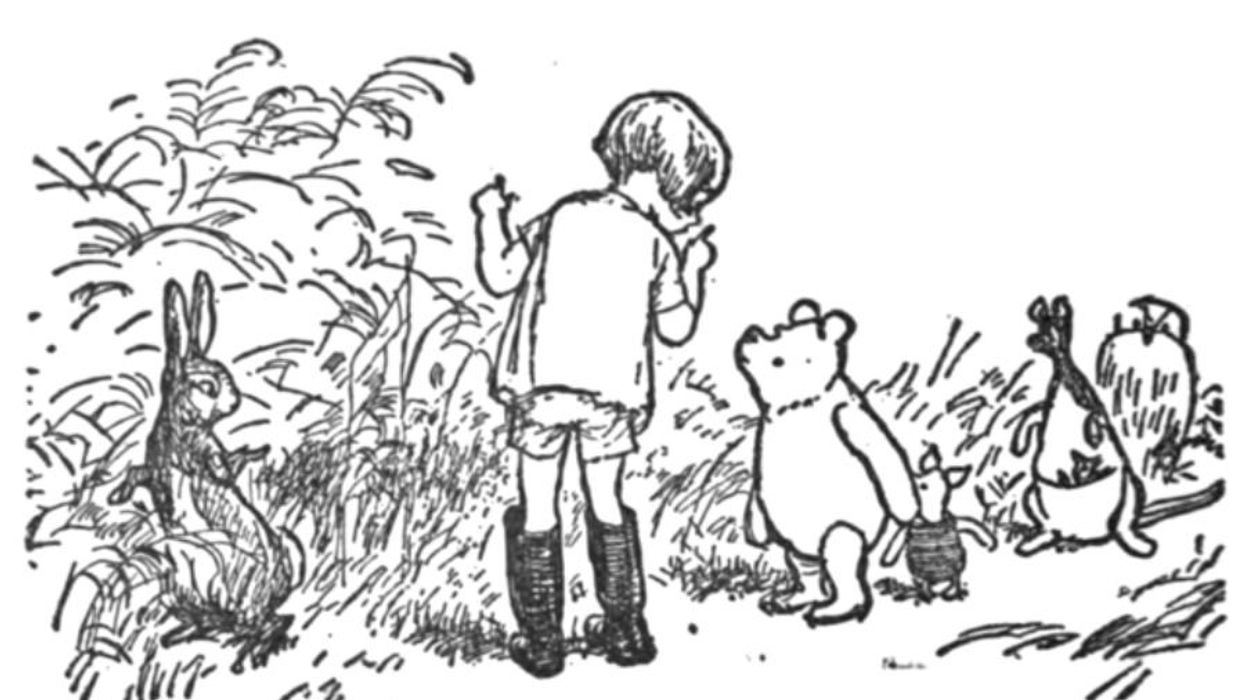
Winnie the Pooh was a staple in our home when my kids were little. The calm wholesomeness of the Hundred Acre Wood offered a soothing contrast to the internet age’s wave of overstimulating and/or obnoxious children’s entertainment, and all three of my offspring ate it up. In fact, my youngest, now 14, will still turn on Winnie the Pooh videos when he’s feeling nostalgic for his childhood.
The characters created by A.A. Milne in 1926 have been beloved for generations. One obvious reason is the way Milne tapped into the curiosity and wonder of a child’s imagination by making a boy’s stuffed animals come to life. A less obvious reason—but one that has become clearer as mental health awareness and education has spread—is that the characters seem to represent an array of mental health disorders. Not only that, but they also serve as a beautiful example of how friends love and support one another through mental illness struggles without stigma or judgment.
The idea that the residents of the Hundred Acre Wood represent distinct mental health conditions isn’t new. In fact, a paper published in the Canadian Medical Association Journal in 2000 titled “Pathology in the Hundred Acre Wood: a neurodevelopmental perspective on A.A. Milne” explained how the world of Winnie the Pooh and his friends was “innocent” on the surface, but upon further examination, the paper’s authors found “a forest where neurodevelopmental and psychosocial problems go unrecognized and untreated.”
The paper assigns mental health disorders to each character based on criteria from the “Diagnostic and Statistical Manual of Mental Health Disorders.” According to the authors, Pooh struggles with ADHD inattentive type and OCD and is also a binge eater, Piglet has generalized anxiety disorder, Eeyore suffers from a depressive illness called dysthymic disorder, Owl has a reading disorder, Rabbit has narcissistic personality disorder (most other analyses peg him with OCD and assign narcissism to Owl—both seem to make sense), Tigger has ADHD hyperactivity-impulsivity type, Kanga is an overprotective single mothe and little Roo is apparently impacted by both his mom’s overprotectiveness and his “undesirable peer group.”
I’m not a psychologist, so I can’t really speak to the accuracy of these diagnoses. What I can speak to is how many friends and loved ones I can pair up almost exactly with the pathologies of these characters, and my guess is most other people can as well.
We all have a Piglet in our lives whose first reaction to anything new is fear and worry. We all have an Eeyore we have to check in on once in a while because we know when we don’t hear from them they’ve probably slipped down the depression hole. We know people who are loveable but flighty like Pooh, people who vibrate with energy and drive us bonkers by leaping before looking like Tigger, people who exert enormous amounts of energy getting everything just so like Rabbit, and so on. We can see the psychological challenges of our loved ones, and maybe even ourselves, in these characters.
And the beauty is that, if we’re lucky, we got to see them early, as kids. The Hundred Acre Wood crew might offer a simplistic version of the mental health disorders they seem to represent, but that’s a pretty good first introduction for children. Especially when they’re also seeing how this band of friends and neighbors treat one another with kindness and care, thoughtfulness and forgiveness. They will learn the deeper complexities of various mental illnesses and treatments as they evolve later on in life, but a child seeing these characters who struggle in different ways being there for one another is a wonderful lesson in itself.
In the Hundred Acre Wood, everyone has different mental health challenges, but no one is ostracized for them. There’s no stigma and no judgment. Sure, sometimes people get annoyed and patience gets lost and feelings get hurt, but that’s just life for all of us. The important thing is, in the end, Pooh and his friends show up for one another in big and small ways through it all. They share their harvests, they help one another find things that get lost, they build homes for one another when one gets blown down, they encourage one another to be brave, strong, calm, or happy when someone can be, and they offer company, comfort and acceptance when they can’t.
A.A. Milne likely had no intention of purposefully representing specific mental health diagnoses, most of which weren’t even in our vocabulary in 1926. But he sure seemed to deeply understand the human condition and managed to create a world where diverse people with different needs and challenges can coexist and thrive together. The fact that kids get to see this in their formative years, to see how it might be possible, is truly a gift.
